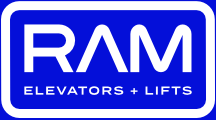A common inquiry that RAM receives is: “What safety features are included in my residential elevator?”.
This is an important question as unlike commercial elevators, residential elevators in most North American jurisdictions are not legally required to meet any specific code and are not required to be inspected upon turn-over to the end user.
It is wise to inform yourself on the safety features that are available as your home elevator will transport your life’s most precious cargo…….family, friends and pets.
There are codes that give guidance on what safety features are best practice but it is up to the home owner to decide what they want and this leads to numerous possibilities.
Just because an elevator is not equipped with all the suggested features in a safety code document does not make it “illegal” it simply means that the elevator does not conform to that particular code.
RAM offers two options for protecting users at the entrance/ exit point to the carriage. These are in addition to the door safety interlocks that prevent the door at a particular landing from being opened if the carriage is not in the appropriate location.
The first option is a Light Curtain. This device essentially shuts the elevator down if the infrared laser beam web/curtain is disrupted by any object. This device also shuts the elevator down if power is removed from the device. This is what the industry would call a “fail safe” condition. Similar devices are used in many machine safety applications.
The second option is a folding carriage gate. This is a physical barrier rather than an electronic one and accomplishes the same function…namely keeping hands, feet and anything else inside the carriage during movement.
From a safety code perspective, the carriage gate option is best practice but in practical terms many people do not like having to open and close the carriage gate repeatedly and opt for the light curtain.
RAM can provide either option and if a consumer wishes to comply fully with a national or local code RAM would be happy to help ensure that this is done.
The governing national codes for Canada and the USA are harmonized and the document reference is CSA B44/ASME A17.1.” It should be noted that some local jurisdictions may have additional requirements to the national codes and should be consulted when planning a residential elevator for your home.
